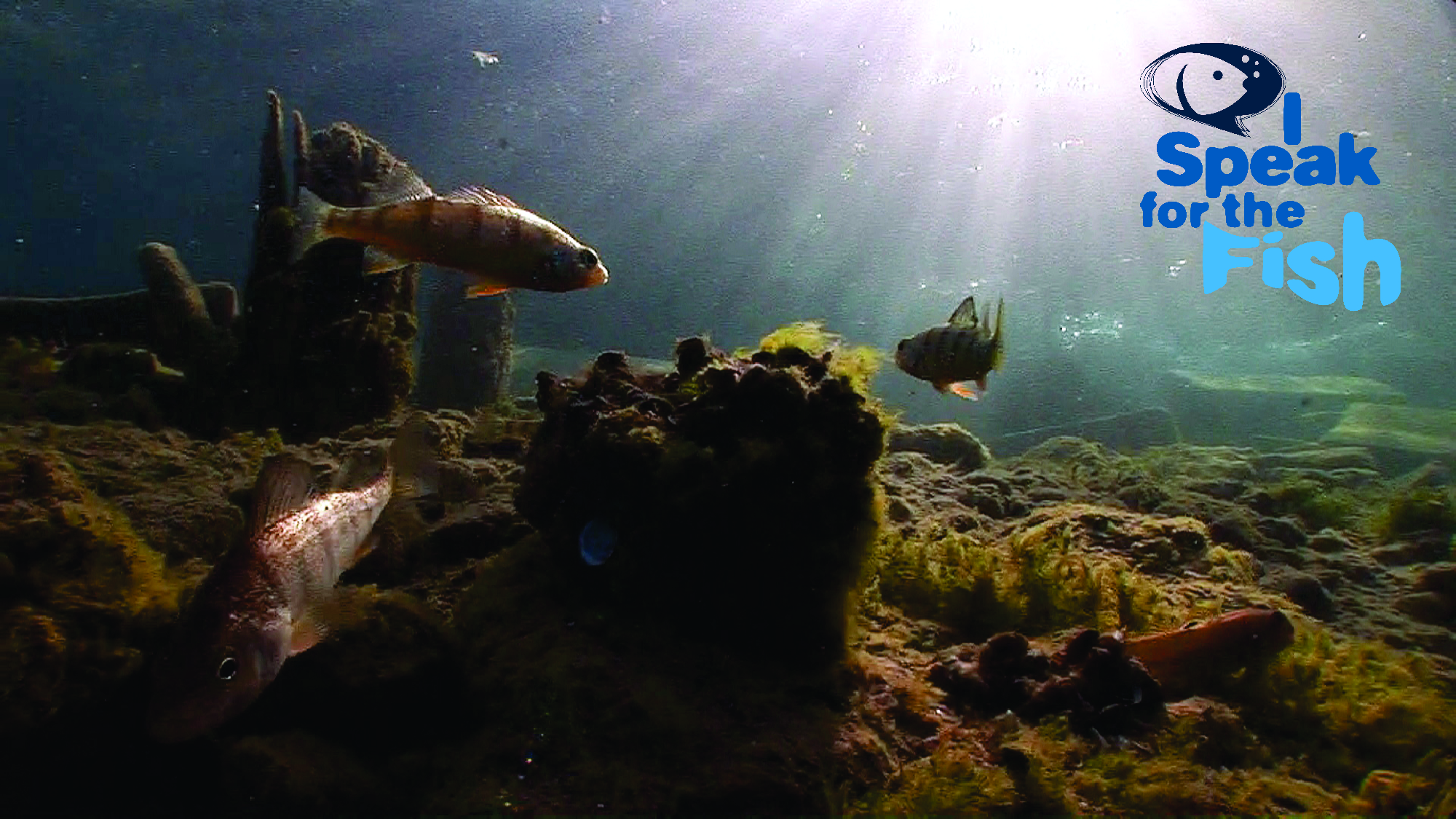
My survey was admittedly small.
I polled one 10-year-old and 30 adults ranging in age from their early 20s to mid-50s. I had a fairly even representation of genders and races. About half were on a college campus, the other half I approached on a public boardwalk.
I limited my poll to one person per social cluster to prevent parroting of the same responses. I asked one of four people sitting at a table, one of three hacky-sac players, one from a couple walking a dog, etc. I also surveyed a number of sport fishermen.
All respondents lived in Michigan none were certified divers. I spoke to the minor with their parents’ permission but did not survey their parents.
I asked two open-ended questions. Responses were recorded, reviewed and summarized.
An N31 qualitative survey is hardly definitive but the results did support my belief that the Great Lakes’ underwater realm suffers from a serious PR problem.
When you picture the Great Lakes underwater, what do you envision?
Every response included a variation on three basic themes.
Deep. Dark. And cold.
While those are all good words to find on a pint of chocolate ice cream, they are hardly a glowing endorsement of the Great Lakes nor the kind of language that will lure anyone here for a dive vacation or honeymoon.
Granted, deep and cold are accurate.
The Great Lakes have a maximum depth of 1,332 ft, an average depth of nearly 300 ft, and even though the nearshore zones reach enjoyable summertime-swimming temperatures in the upper 70s, a large portion also hovers around the iceberg range for most of the year.
But in terms of marketing, deep and cold might be appealing to whitefish but not to most people.
The majority of respondents also used dark accompanied by words like dirty and murky. And yet, in many locations the Great Lakes are as clear as the purest mountain stream.
I have been 100 ft deep in Lake Superior and Lake Huron where I could still see the sunlight rippling on the surface above.
I have enjoyed glass-bottom boat tours in Alpena, Michigan and Tobermory, Ontario where we could count the planks on the shipwrecks 30 ft below us.
I remember a dive in the Thousand Islands region of Lake Ontario where the sunbeams were still dancing round us at 80 ft.
So, why is there such a disconnect between what I have lived and the generally held perception of the entire Great Lakes as being dark, murky and dirty?
In the absence of personal experience, we all depend on others to form mental images. I have never been to the top of a mountain, but I can visualize it based on the images that others have shared from their summit and from watching films and blockbuster movies.
Sadly, the majority of humans on Earth will never go diving or even open their eyes underwater. This means that the general public’s perception of life underwater is completely dependent on what divers film and share.
In my introductory column, I looked at how dive pioneers like Jacques Cousteau and Hollywood movies like Finding Nemo have been extremely advantageous for ocean inhabitants – excluding the damage caused by the Jaws franchise.
All these positive documentaries and films have solidified the public’s impression of the oceans as being completely different than the Great Lakes as evidenced by the responses to my next survey question.
How then would you describe life in the ocean?
They all immediately envisioned a vibrant world bursting with life.
Pretty. Bright. Colorful.
They all described a coral reef.
Yet, according to NOAA coral reefs make up less than 1 percent of the ocean. That means 99 percent of the world’s oceans are not colorful. They do not contain red sponges and purple sea fans or colorful clownfish.

Purple fan. (Photo Credit: Greg Lashbrook/PolkaDot Perch)
Much like the Great Lakes, the oceans are mostly just open blue water and they are not always clear and pretty.
When storms blow in or tides change, visibility on almost any dive site in the world can go from meters down to inches in a very hot minute.
Additionally, ports around the globe suffer from extreme pollution. I remember the harbor water in Freeport, Bahamas being so nasty that even my husband could not bring himself to go in to film a rarely seen jellyfish event.
Again, there seems to be a disconnect between the public’s perception and what is out there. But unlike in the Great Lakes, this time it skews in the ocean’s favor.
The mass media has successfully molded the public’s perception of the oceans as a whole as being colorful based on the tiny, albeit prolific, reef zone.
Sometimes I dream about how the Great Lakes would benefit if they too were defined solely by their top 1% of abundance.
And the survey says…
The public’s perceptions of life underwater are based on what they have seen on television, in movies and over social media. And unfortunately, rather than focusing on the beauty and bounty found within the Great Lakes, coverage of the region is typically limited to problems.
A simple comparison of recent coverage by National Geographic shows the dramatic difference in framing between the Great Lakes and the Hawaii Islands.
Features from a 2020 Great Lakes cover story include, “North America’s most valuable resource is at risk,” “See how the Great Lakes food web is in trouble,” and “Maps show how dramatic fertilization is choking the Great Lakes.”
Whereas highlights from a 2022 piece about the Hawaiian Islands include, “How islands transformed themselves into paradise,” “Across the islands creatures great and small amaze us with their ability,” and “Spiders that smile, fish that climb and turtles that bury secrets.”
Why only dire news from the lakes but all cool stories from the islands?
Certainly, the two locations are very different but environmental issues are not limited to the Great Lakes. In addition to invasive species, the Hawaiian Islands are also dealing with some very serious pollution problems some of which are “choking” and killing the reefs.
Likewise, the Great Lakes have lots of interesting critters with the ability to “amaze.”
Of course, raising awareness for environmental issues is important but it seems a disservice to frame the Great Lakes as the place with nothing but problems.
The Detroit Lions football team recently demonstrated that with a lot of hard work and persistence it is possible to turn the tide of public perception and finally gain some long overdue admiration.
My hope is that by showcasing the top 1% within the Great Lakes we can ensure future 10-year-olds in Michigan do not say, “I think all the fish live in the ocean.”
Catch more news at Great Lakes Now:
I Speak for the Fish: Favorite fish books
I Speak for the Fish: These catfish have something to say
Featured image: The scenic Great Lakes. (Photo Credit: Greg Lashbrook/PolkaDot Perch)




